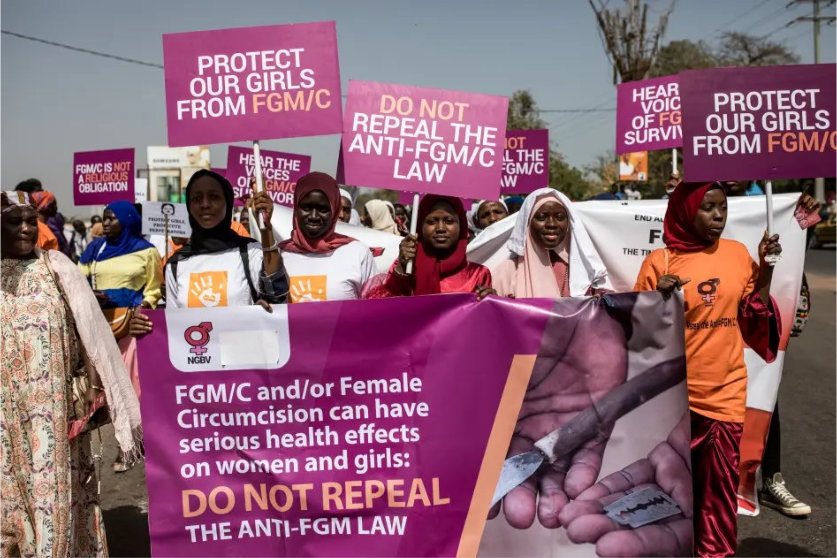Female Genital Mutilation: A Global Effort to End Harm

Reduction in female genital mutilation (FGM) has become a global priority, with international efforts aimed at ending this harmful practice gaining momentum in recent years. Female Genital Mutilation involves the partial or total removal of external female genitalia for non-medical reasons. This practice is prevalent in African, Middle Eastern, and Asian countries. While the reasons for its continuation are deeply rooted in cultural, social, and sometimes religious beliefs, the reduction in female genital mutilation is critical to improving the health and well-being of millions of women and girls around the world.
The Harmful Effects of Female Genital Mutilation
The immediate and long-term consequences of FGM are severe. These include severe pain, bleeding, infection, complications during childbirth, and psychological trauma. The reduction in female genital mutilation aims not only to alleviate these physical and emotional consequences but also to address the underlying societal structures that perpetuate the practice. By reducing the prevalence of FGM, the global community seeks to protect women from lifelong suffering and the denial of their fundamental human rights.
Despite the clear harm associated with FGM, the practice continues in some regions, with millions of girls still at risk of undergoing the procedure. In some cultures, FGM is seen as a rite of passage, an essential part of cultural identity, or a prerequisite for marriage. These cultural beliefs often complicate efforts to eliminate FGM. However, through targeted education and awareness campaigns, the reduction in female genital mutilation is becoming an achievable goal.
Global Advocacy and Education Efforts
International organizations such as the United Nations, the World Health Organization (WHO), and various NGOs are at the forefront of advocating for the reduction in female genital mutilation. These organizations emphasize the importance of education and awareness in communities where FGM is prevalent. Educational programs aim to inform individuals about the dangers of FGM and encourage them to abandon the practice for the health and safety of their daughters. These initiatives are crucial, as many communities may not be fully aware of the health risks associated with FGM or the legal frameworks that prohibit it.
Moreover, the role of women’s rights groups cannot be overstated in the fight against FGM. Activists are not only raising awareness but are also providing support for those who have undergone the procedure. These support systems are essential for helping survivors heal and regain their sense of identity and autonomy. As more women speak out against FGM, the movement gains strength and visibility, creating more momentum for a reduction in female genital mutilation efforts.
Legal Frameworks and Government Action
Another key component of the reduction in female genital mutilation is the introduction and enforcement of laws that ban the practice. Many countries where FGM is prevalent have introduced legislation making the procedure illegal, and governments are responsible for enforcing these laws. In some nations, however, the enforcement of these laws remains weak, and FGM continues to be carried out in secret. Governments must ensure that FGM is no longer tolerated and that violators are held accountable.
In addition to outlawing FGM, many governments are working on initiatives to provide medical and psychological care to those affected. This includes setting up healthcare programs to treat complications arising from FGM and providing psychological counseling for survivors. By creating a supportive environment for those affected, governments can further contribute to the reduction of female genital mutilation.
Community Involvement and Cultural Sensitivity
The reduction in female genital mutilation cannot be achieved without considering the cultural context in which the practice exists. Efforts to end FGM must be sensitive to local traditions and beliefs. Community-based approaches that involve respected local leaders, including elders, religious figures, and other influencers, are crucial in changing attitudes toward the practice. These leaders often have significant influence and can help reshape community norms in favor of abandoning FGM.
Moreover, it is essential to approach the issue with respect for cultural differences, ensuring that the community’s cultural identity is preserved without the harmful practice of FGM. Successful programs have involved dialogue and collaboration, allowing communities to explore alternatives to FGM that align with their traditions while safeguarding the health and rights of women and girls.
The Role of Technology and Social Media
In the digital age, technology has become an essential tool in the fight against FGM. Social media platforms and online resources provide opportunities for education and advocacy to reach global audiences. The reduction in female genital mutilation has gained traction as survivors and activists share their stories online, helping to build an international community of support.
Technology also allows for better monitoring of FGM practices, especially in remote or rural areas where data collection can be challenging. Digital platforms make it easier for activists and organizations to track progress, engage with local communities, and mobilize resources for education and legal action.
The Way Forward
While significant progress has been made in the fight to end FGM, much work remains. The reduction in female genital mutilation is a long-term goal that requires ongoing efforts from governments, international organizations, local communities, and activists. It also requires a continued focus on women and girls’ health and human rights. By combining legal frameworks, education, community engagement, and technological advancements, the global community can work together to end FGM.
Education, awareness, legislation, and grassroots support will help shift attitudes toward FGM and promote lasting change. Additionally, focusing on the health consequences of FGM, including the physical and psychological impacts, will encourage communities to abandon the practice in favor of healthier alternatives.
In conclusion, the reduction in female genital mutilation is not just a health issue but a human rights issue. As the global community continues to address this practice, it is essential to consider the diverse cultural, social, and political factors that contribute to its perpetuation. By fostering a collective effort at all levels—global, national, and local—the hope is to see a world where FGM is no longer a threat to the well-being of women and girls. Through continued advocacy, legal reform, and community engagement, the end of female genital mutilation is within reach.
About the Author
DURU SUNNY-GEORGE
Administrator
Duru Sunny George is a Media Practitioner | Journalist | Cinematographer | Photographer | Lecturer - popularly known as DSG, is a versatile media entrepreneur and educator. He is the Founder & CEO of DSG STUDIOS, DSG HERALD NEWS, and DSG RADIO, leading platforms in journalism, photography, cinematography, and digital broadcasting.





